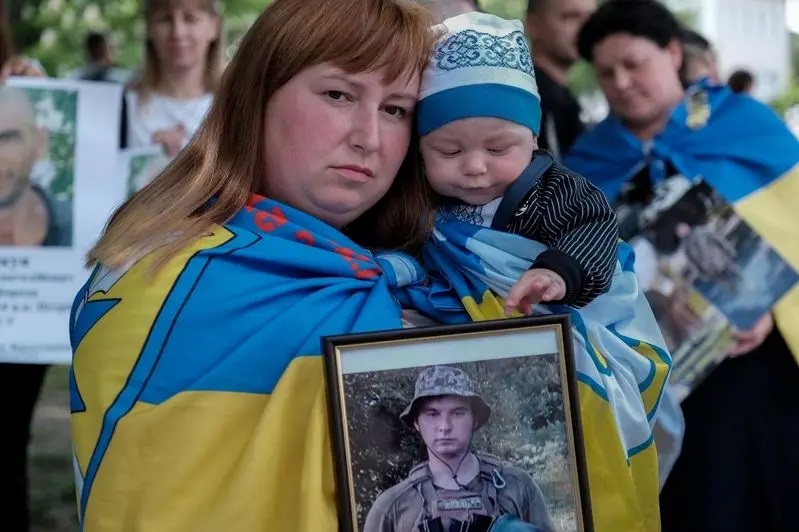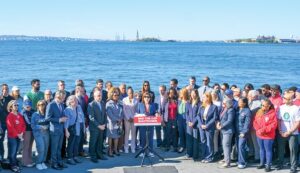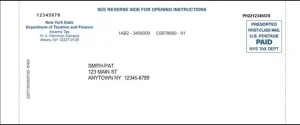Ukraine recognizes multiple citizenship to ease population crisis caused by war

Ukraine’s population has decreased by more than 11 million in more than three years since the Russian invasion in February 2022. In order to ease the population crisis exacerbated by the war, Ukraine passed a new law on June 18, 2025 to recognize dual or multiple citizenship. In the future, the application procedures for spouses and children of Ukrainians abroad will be simplified, and foreigners fighting on the Ukrainian front will also be more easily able to obtain Ukrainian citizenship. The Ukrainian government said that it hopes that this new law will attract citizens to return home, alleviate the large-scale emigration of the population due to the war, and will also rebuild relations with tens of millions of overseas citizens.
Ukraine did not recognize dual citizenship in the past, and Ukrainians who held passports of other countries abroad had to give up their other nationalities. On June 18, the Ukrainian Parliament passed the second reading of the bill with 243 votes in favor and 19 votes against, allowing individuals to have multiple nationalities. Ukrainians can hold passports of other countries without giving up their Ukrainian nationality, and foreigners can obtain Ukrainian passports without giving up their original nationality.
Oleksiy Chernyshov, Deputy Prime Minister and Minister of National Unity of Ukraine, pointed out that this is an important measure to attract Ukrainians to return home. He hopes that not only Ukrainians who left in 2022 will return home, but also those who had to flee when Russia first invaded in 2014. “This decision is an important step in maintaining and restoring relations with millions of Ukrainians around the world.” The main drafter of the bill said: “Now there are millions of Ukrainian citizens living abroad as refugees after the war. Many of them have citizenship of other countries and find it difficult to return home. We hope that they can continue to be Ukrainians.”
In the 1990s, when the Soviet Union collapsed and Ukraine became independent, the population was 52 million, and then it experienced several large-scale population emigration. Between 1991 and 2004, 2.5 million people emigrated from Ukraine, of which 1.9 million moved to other former Soviet republics. In February 2022, Ukraine’s population was about 43 million. Since the Russian invasion on February 24, it has dropped sharply to 32 million. A large number of women and children have fled to other countries as refugees or obtained foreign identities to start a new life overseas. Although the specific war damage figures are still confidential, Ukraine’s population has decreased by at least 11 million, about a quarter.
According to UN data, Ukraine was already facing severe demographic challenges before the outbreak of the war. Ukraine’s birth rate is already one of the lowest in Europe. Daryna Marchak, Ukraine’s Deputy Minister of Social Policy, analyzed that the number of children born to each woman must reach 2.1 in order for the country’s population to remain stable without immigration. However, before Russia’s full-scale invasion, Ukraine’s total fertility rate was only 1.16, and now the number has dropped to 0.9, a record low.
Therefore, with the large number of casualties caused by the war, the increasingly serious aging of the population, and the sharp decline in the birth rate, Ukraine can be said to be facing an unprecedented population crisis. Volodymyr Vyatrovych, a member of parliament who supports the new law, said that only by eliminating the outdated single citizenship system can the problem of rapidly declining population be alleviated.
Including refugees who fled Ukraine’s recent war and immigrants who have settled abroad for a long time in the past, about 1.4 million people live in Canada, 1.1 million in the United States, and 7.5 million to 10 million in the European Union. The Ukrainian Ministry of Foreign Affairs said that more than 90% of Ukrainians abroad live in countries that recognize dual citizenship – more than 130 countries in the world allow multiple citizenship, including most EU member states. In the past, if these overseas expatriates wanted to apply for Ukrainian citizenship, they needed to live in Ukraine for more than five years and give up their other nationalities. Under the new law, they only need to live in Ukraine for one year to apply in the future.
In addition, foreigners who have served in the Ukrainian army or made outstanding contributions in other fields will also be able to obtain Ukrainian citizenship more easily than before; the procedures for Ukrainians’ spouses and children abroad to apply for Ukrainian passports will also be greatly simplified. One Ukrainian interviewed abroad said, “Our roots are in Ukraine, we love our country and support it with all our strength. The new law recognizing multiple citizenship is very important to Ukrainians because there are millions of Ukrainians scattered around the world for safety, and we are about to lose or have already lost our Ukrainian identity.” Ukraine’s previous ban on multiple citizenship stemmed from nationalist politicians’ concerns about “immigrant invasions” from Asia and Africa. The Kyiv Post reported that although multiple citizenship is now open, except for foreigners who meet the “outstanding contribution to the war”, other immigrants still need to face many challenges to become Ukrainian citizens, including taking Ukrainian language, history, and constitutional tests. The test location is also quite limited – it cannot be conducted online, but must be conducted in one of four locations, including Kharkiv, Kiev or Lviv – and the cost of a single test is as high as 9,000 hryvnia (about 215 US dollars), which is unaffordable for many stateless people. Anastasia Koval, a lawyer for the United Nations High Commissioner for Refugees, said that Ukraine currently hosts nearly 250,000 stateless people, but the National Immigration Bureau, which is responsible for issuing refugee and residence certificates, is too conservative. Many children born to stateless people in Ukraine do not have legal status and cannot enjoy the benefits of citizens.
In addition, the new law is also limited in the scope of application and does not apply to Russian citizens or citizens of countries that do not recognize Ukraine’s territorial integrity. The new system also does not cover residents of “Russian-occupied areas” – since Russia occupied the four regions of Luhansk, Donetsk, Zaporizhia and Kherson, it has revoked the identity certificates of Ukrainians in the area and forced them to hold Russian passports instead. According to Ukraine’s existing mechanism, witnesses, parental testimony, etc. are required to restore these people’s Ukrainian citizenship, but many people’s records have long been lost. Ukrainian lawmakers admit that although the new law is a step in the right direction, there is still a lot of room for improvement.
Now that Ukraine has passed the amendment and begun to recognize dual or multiple nationalities, will it successfully alleviate the imminent population problem? The war has lasted for more than three years, and there is still no sign of a ceasefire. Even if the war ends, how many Ukrainians abroad are willing to return home?
According to a poll by the Ukrainian think tank Economic Strategy Center, in November 2024, the proportion of refugees who expressed the possibility of returning to Ukraine was lower than at the beginning of the war. In November 2022, only 10% of refugees said they would “never return to Ukraine”. By the end of 2024, this figure had climbed to 34%. The same survey also showed that 19% of Ukrainian refugees abroad have obtained citizenship of other countries, and 45% are still applying or waiting. Many people have relearned the language and found jobs abroad, and their children also have good development and prospects abroad. The number of people who plan to stay abroad is currently increasing by about 100,000 to 150,000 people per month.
![]()







